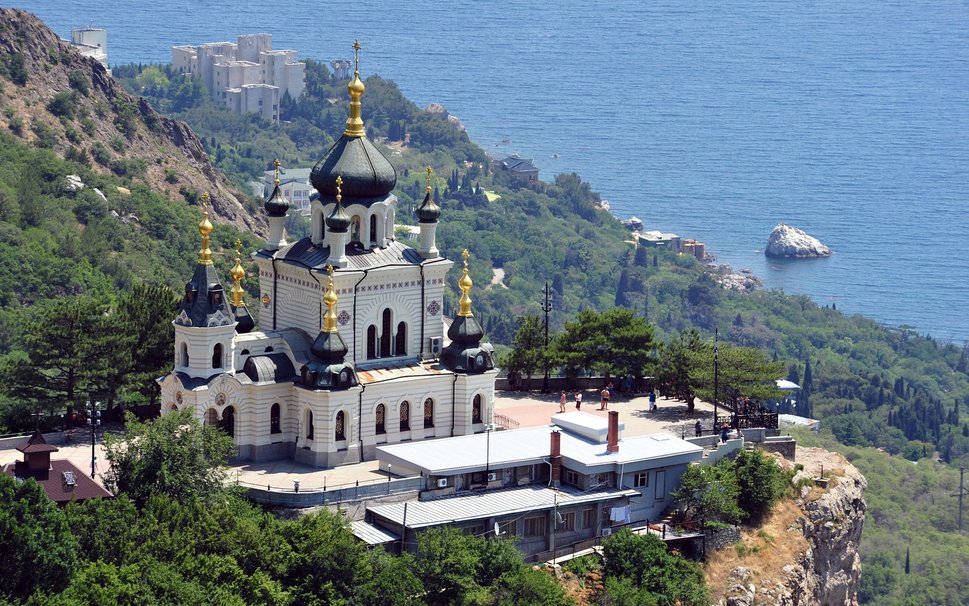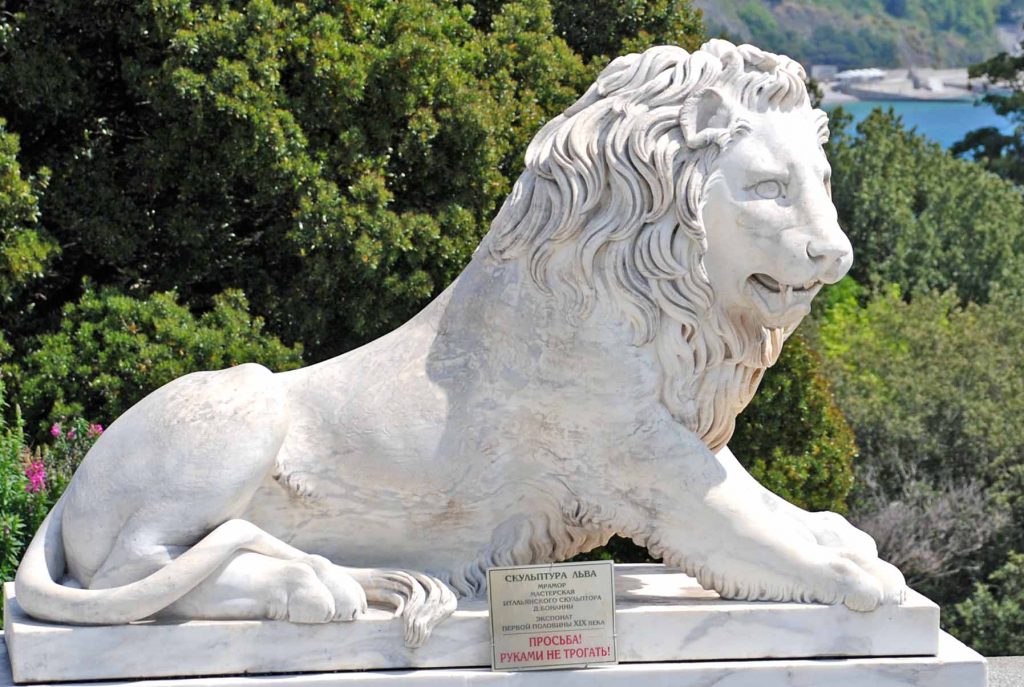By Vladimir Zaitsev

If you have travelled half of the world and had not chance to see Crimea – it means you have not seen its another half.
Crimea is a pictorial peninsular which is washed by two seas – the Black Sea and the Sea of Azov and is connected with the continent by the Perekop Isthmus.It is located at the same latitude as Southern France and Northern Italy, has Mediterranean-type climate with plenty of sunshine. In spite of comparatively small territory Crimea has
many natural and historical wonders and can offer the whole range of touristic attractions starting from ancient Greek monuments in its southern side to the crystal-clear waters of the Black Sea and some most beautiful beaches in its western side.
The capital of Crimea is Simferopol, and it takes two and half hour from Moscow to reach its fast growing international airport. Most of the tourists visiting Crimea, skip Simferopol on their route to the Black sea, nevertheless if you wish to see the history of this region during the last two hundred years, this city is right place for you. Simferopolis in Greek –Simferopolis, and literally means the ‘city gatherer’ or ‘good city’;in itssouthern partone may find rocky hills where buried the ruins of ancient Scythian city known as the Scythian Neapolis.
From this place is open a bird’s-eye view upon the new and old part of the city. It is old part reveals many houses and one store buildings built in late 19-beginning of 20 centuries by Crimean Tatars as well as Russians. The central part of the city is quite prominent with wide and green streets,where in summer season one can find the number of French type cafeterias from where the fumes of fresh made coffee and bakery is spread. Every visitor here is offered with wide range of famous Crimean winessome of them could as expensive as the price of cappucino.There are side by side situated old Russian Drama Theatre, Music Theatre, not far away, next to the Square of Victory is Parlament building, Art Gallery and Art Museum. The golden domes of new cathedral of St.AlexanderNevsky built under patronage of President V.Putin is seen across the street.
The Simferopol is city of monuments and many buildings are good examples of neo-classic and art deco type of architecture. From Simferopol one can reach any part of Crimea since its central location, one of the local traditional transportation is well known the Crimean Trolleybus which is purely running on electric power. The trolleybus route which is the longest line in the world(with total length of 96 kilometres) connects Simferopol to the city of Yalta on Crimean Black Sea coast and while travelling unveils pictorial panoramas of mountains, forest and the sea coast. This is also the safest and cheapest way to reach the south coast of the sea.
On the way to Yalta, upon the mountain slope are situated fascinating parks ofNikitsky Botanical Garden with more than 50,000 species of flora and fauna. The Orchid Garden is a special and secluded area within Nikitsky, offering about 50 rare species of exotic flowers. Nikitsky is constantly evolving and growing scientific laboratory with dedicated staff, in the spring of this year the institute launched ambitious new project- Rosarium, a Rose garden which is one of the largest of this kind in Europe. It is a real wonder to take a walk along small paths and shady lanes of its evergreen parks,to sit and enjoy all of the natural colours and sweet smells of nature .Believe it or not, Nikitsky is still just as beautiful during the winter season.
For anyone who likes mountain scenery then it is hard to do better in Crimea than Mount Ai-Petri. It is certainly not the region’s highest mountain peak, but it is one of the most spectacular thanks, in part, to being home to the world’s longest unsupported cable car span. From Yalta one can get to the top of Ai-Petri on the cable car, where for the tourists are built observation platforms with breathtaking views upon the sea and the mountains.
Being in Yalta, one cannot miss the summer residence of the last of the Russian Tsars, Nicholas II, theLivadia Palace with extensive gardens overlooking the sea coast and the city’s bay.Built by architect I.Monighetti, the Livadia is famous as a venue for the Yalta Conference in 1945 where Stalin,Churchill and Roosvelt met to re-draw the map of Europe at the end of the Second World War. There, in the imposing White hall
there is a big tablewhere “The Big Three” sat and signed crucial documents.
On the outskirts of Yalta, at the small resort town Alupka, there situated another famous monument known as Vorontsov PalaceBuilt between 1828 and 1848, by British architect Edward Blore, who worked on Buckingham Palace this magical palace has enchanted visitors for almost 200 years.
During the Yalta Conference, Winston Churchill stayed in Vorontsov Palace and later he fondly recollected these days:“The setting of our abode was impressive … Behind the villa, half Gothic and half Moorish in style, rose the mountains, covered in snow, culminating in the highest peak in the Crimea. Before us lay the dark expanse of the Black Sea, severe, but still agreeable and warm even at this time of the year. Carved white lions guarded the entrance to the house, and beyond the courtyard lay a fine park with sub-tropical plants and cypresses.”

Another magical place of this coastal area which no one traveler could miss out is situated between Yalta and Alupka, the Swallow’s Nest(‘LastochkinoGnezdo’)in Gaspra.This is fairy tale like castle, châteaux fantastiques ,buit between 1911-1912,on the top of the 40-metre high Arora Cliff, in Neo-Gothic style by the Russian architect Leonid Sherwood. The castle overlooks the Cape of Ai-Todor on the Black Sea coast and is located near the remains of the Roman castrum of Charax. The Swallow’s Nest is one of the most popular visitor attractions in Crimea, having become the symbol of Crimea’s southern coastline it appeared in many movies and reproduced in souvenirs and cards.
On the highway from Yalta to Sevastopol, visitors are advised to take a glimpse of small yet indeed a very remarkable site -The Church of Christ’s Resurrection which during Soviet era was completely abandoned. Being restored in the early 1990-s the church is located over 400 meters high and is overlooking the Black Sea.
To reach this place one need to take a small and steppe road, adjacent a high way, going toward the mountain peaks. The stretch of a few kilometers is indeed adventurous one, since as you proceed further the one side of narrow road is bordering with almost a vertical surface of the rocky mountain, while another one
is near the mountain edge. The treacherous grey rocks rising above as if tsunami wave
threaten to drop any time its massive boulders and stones. The Church was built in 1892, in memory of miraculous salvation of Tsar Alexander III and his family during a major rail crash on their return to St.Petersburg from Crimea.
It is also said, that the church played a role of a lighthouse since the captains of the ships cruising in the Black sea could see the light coming from the church windows from very long distances.
One of the greater advantages of travelling in Crimea is comparatively short distances, opportunity to see many things in a short span of time, cultural and ethnic diversity, hospitality of people, chance to experience a rich local cuisine and variety of wines. After all, one may find that trips and entertainment in this region are pretty reasonable.
While southern coast of Crimea is enveloped in ever green forest, its eastern side gets more rugged as you approach towns like Sudak and Feodosia. The eastern Crimea is mesmerizing with its moon like volcanic landscapes, the mysterious rock formations boast names such as the Devil’s Finger or Black mountain and less crowded beaches.
The Genoese Fortress in Sudak is definitely one of the places in this region that should be kept on the traveler’s route. The massive, picturesque fortress was built between 1371 and 1469 by the Genoese colonists as the main fortified base on the Crimean peninsula and is an inspirational place for many artists. The length of its walls exceeds two kilometers and fourteen towers with the height up to 15 metershave preserved the authentic medieval beauty. The doors of the Genoese Fortress are open for visitors all-the-year-around.
Anyone who earlier visited Feodosia can hardly forget the Aivazovsky National Art Gallery, the ex-house of prominent Russian romantic-artist Ivan Aivazovsky(1817-1900), who during almost 60-year of his carrer created about 6000 paintings, making him one of the most prolific artists of his time. Aivazovsky name is often associated with his seascapes and marine battle scenes, his ability to convey the effect of moving water and of reflected sun or moonlight was often praised by art critics.
The Gallery consists of about 12 thousand nautical theme works, amongst them there are 417 paintings by I.Aivazovsky himself thus making this museum the world’s largest collection of the artist. Besides, in each Crimean museum or gallery one can find important representative of Russian Art Schoollike M.Voloshin, K.Bogaevsky, M.Lattry, L.Lagorio and A.Kuindzhiwho were deeply connected with Crimea. During spring-summer months, on the coastal side there are number of exhibitions and shows held by contemporary Crimean artists and perhaps, one of the best memories from this land of sea and sunshine is a painting which bought directly from the artist.

